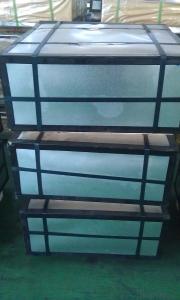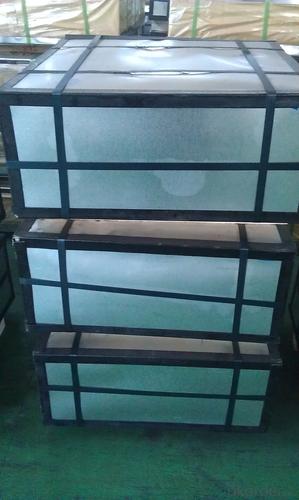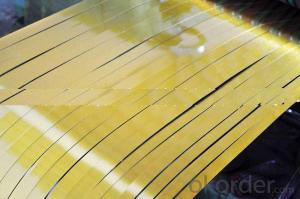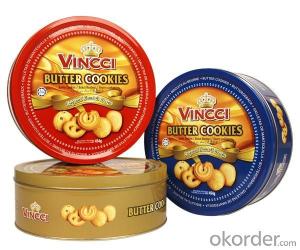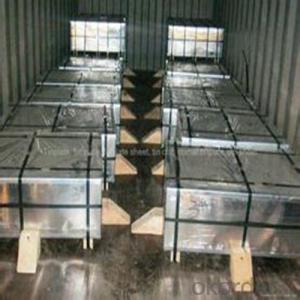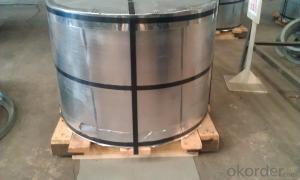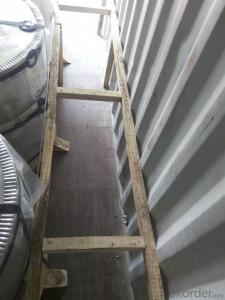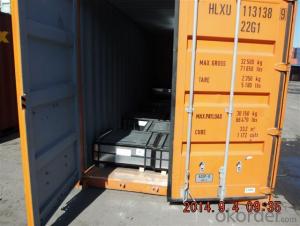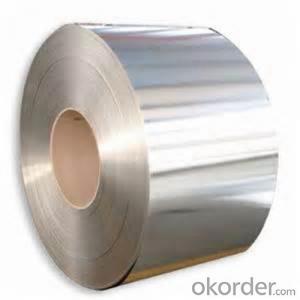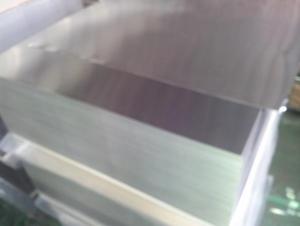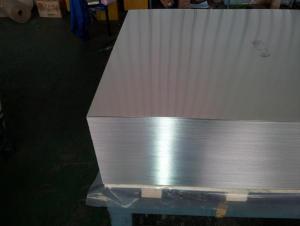TFS
- Loading Port:
- China Main Port
- Payment Terms:
- TT OR LC
- Min Order Qty:
- -
- Supply Capability:
- -
OKorder Service Pledge
OKorder Financial Service
You Might Also Like
Tin Free Steel (TFS)
Is also known as chromed steel, as it is obtained by coating the metal base (low-carbon steel) with an ultra-thin layer of metallic chrome and then with a chromium oxide layer.This steel product was developed to meet economic requirements, and excels tinplate in paintability, paint adhesion, and economy. It is widely used for making beverage cans and 18-liter cans. It is also used for making photographic film cases and as a protective material for optical fiber cables.
Our TFS Specification:
Standard: AISI, ASTM, BS, DIN, GB, JIS
Material: MR,SPCC
Thickness:0.15mm - 0.45mm
Width: 600mm -1150mm
Temper: T1-T5
Annealing: BA & CA
- Q: What are the different ways to store tinplate containers?
- There are several different ways to store tinplate containers, depending on the specific needs and preferences. Some common methods include stacking them on shelves or in cabinets, using storage bins or boxes to organize them, hanging them on hooks or racks, or utilizing dedicated storage systems such as wall-mounted shelves or hanging rails. Ultimately, the choice of storage method will depend on factors such as available space, container size and shape, and the desired level of accessibility.
- Q: What are the main applications of tinplate in the agricultural industry?
- Tinplate is commonly used in the agricultural industry for its various applications such as packaging and storage of agricultural products, manufacturing of containers for fertilizers and pesticides, as well as for agricultural machinery components due to its corrosion-resistant properties.
- Q: What are the main applications of tinplate in the cosmetics industry?
- Tinplate is primarily used in the cosmetics industry for packaging purposes. It provides a durable and protective barrier that safeguards cosmetic products from external elements, such as light, moisture, and air, thereby extending their shelf life. Additionally, tinplate offers an attractive and visually appealing packaging solution, allowing brands to enhance their product's presentation and create a unique brand identity.
- Q: Can tinplate be customized with embossing or debossing?
- Yes, tinplate can be customized with embossing or debossing techniques.
- Q: How does tinplate impact the overall product design?
- Tinplate impacts the overall product design by providing a durable and corrosion-resistant material that can be easily formed into various shapes. Its versatility allows for intricate designs and details, making it suitable for packaging, containers, and canning. Additionally, tinplate's smooth surface allows for vibrant printing, enhancing the visual appeal of the product. Overall, tinplate plays a crucial role in ensuring the functionality, aesthetics, and longevity of the product design.
- Q: What are the different thickness options for tinplate?
- The different thickness options for tinplate typically range from 0.13mm to 0.5mm.
- Q: What are the latest innovations in tinplate technology?
- Some of the latest innovations in tinplate technology include the development of lightweight tinplate materials, improved corrosion resistance coatings, advanced printing techniques for high-quality packaging designs, and the use of recycled materials in tinplate production to promote sustainability. Additionally, there have been advancements in the manufacturing processes to enhance efficiency and minimize waste.
- Q: How does tinplate perform in terms of corrosion resistance compared to other materials?
- Tinplate offers excellent corrosion resistance compared to many other materials, particularly when exposed to moisture or acidic environments. The tin coating acts as a protective barrier, preventing the underlying steel from corroding. This makes tinplate a preferred choice for packaging and other applications where corrosion protection is crucial.
- Q: What are the different types of tinplate finishes?
- There are several different types of tinplate finishes, including bright finish, stone finish, matte finish, and lacquered finish.
- Q: What are the different ways to recycle tinplate packaging?
- There are several different ways to recycle tinplate packaging. One common method is to separate the tinplate from other materials, such as paper or plastic, and then send it to a recycling facility where it can be melted down and reused to make new tinplate products. Another option is to reuse the tinplate packaging for storage or other purposes before eventually recycling it. Additionally, some municipalities offer curbside recycling programs where tinplate packaging can be collected and processed along with other recyclable materials.
Send your message to us
TFS
- Loading Port:
- China Main Port
- Payment Terms:
- TT OR LC
- Min Order Qty:
- -
- Supply Capability:
- -
OKorder Service Pledge
OKorder Financial Service
Similar products
Hot products
Hot Searches
Related keywords
